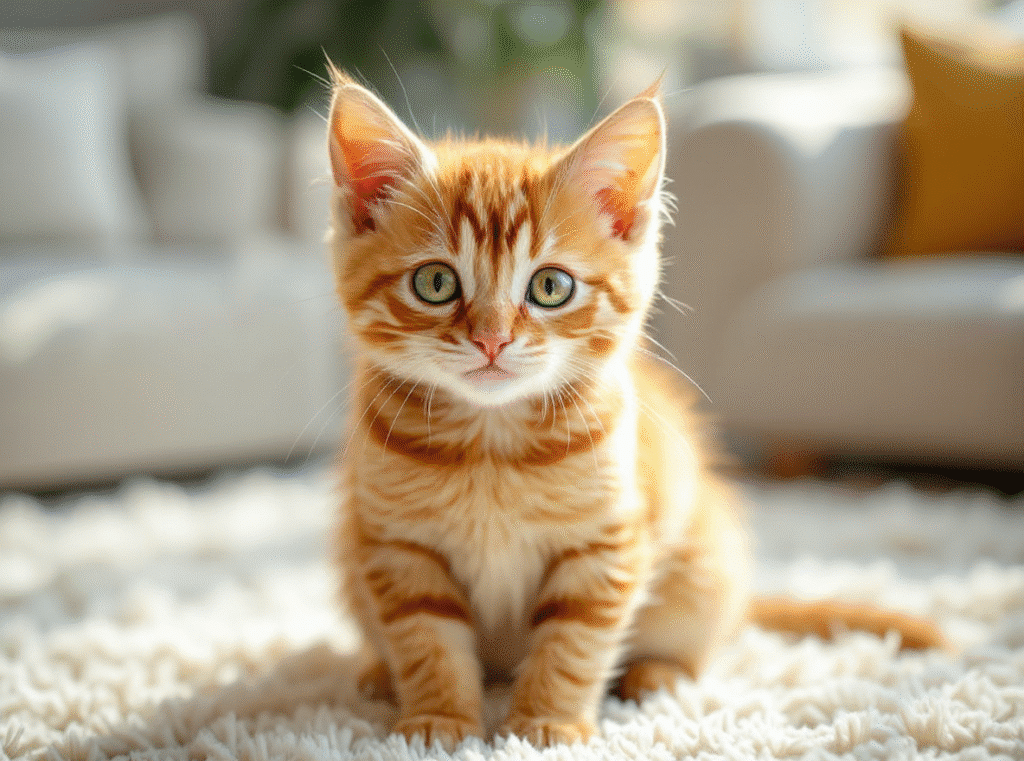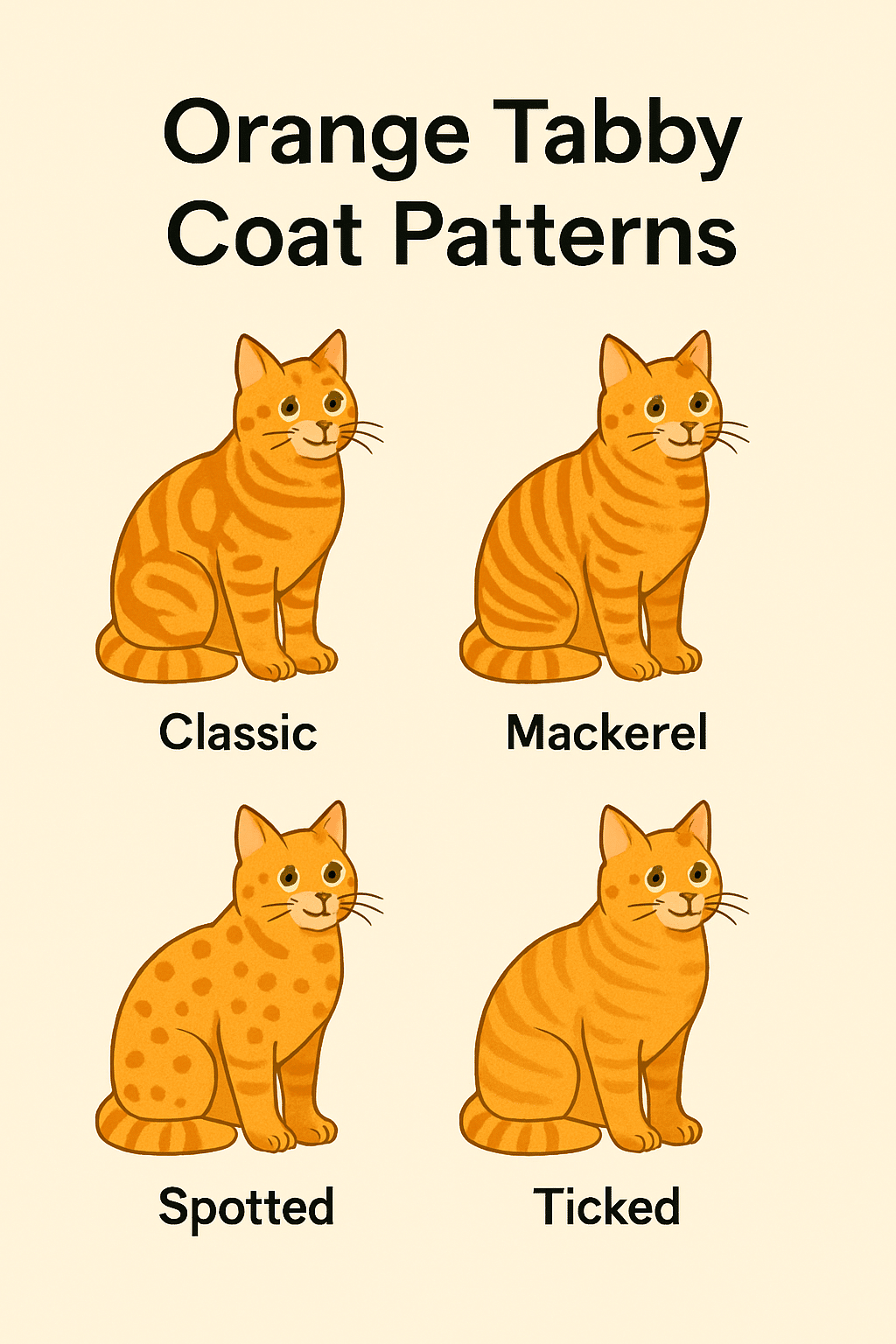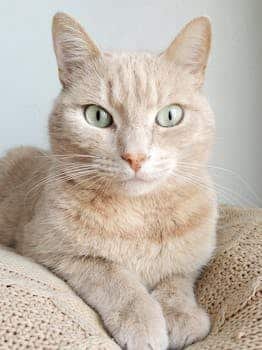Post Disclaimer
Catopedea shares information for educational and general interest purposes only. Our content is not a substitute for professional veterinary advice, diagnosis, or treatment. Always consult a licensed veterinarian for concerns about your cat’s health, diet, or behavior.
Cats are fascinating in all their colors and patterns, but there’s one that steals the spotlight almost every time the orange tabby cat kitten. With their fiery coats, mischievous energy, and legendary charm, orange tabby kittens hold a special place in cat lovers’ hearts. Whether you’re considering adopting one, already caring for one, or simply curious about their reputation, this guide covers everything you need to know.
From their genetics and coat patterns to personality quirks and care needs, we’ll dive deep into what makes these kittens so captivating.
What Is an Orange Tabby Cat Kitten?

An orange tabby kitten is not a specific breed, but rather a coat color and pattern. The word tabby refers to a distinctive fur pattern with stripes, spots, or swirls, while orange (sometimes called ginger or marmalade) describes the coat color.
Almost every orange kitten has some kind of tabby markings, because the genetics that produce orange coats are closely tied to the tabby pattern. That’s why you’ll rarely see a “solid” orange cat.
Key facts:
- Orange tabbies can belong to many breeds (e.g., Domestic Shorthair, Maine Coon, Persian).
- Their coats range from pale yellow to deep reddish-orange.
- They often have an “M” shape on their forehead, a classic tabby feature.
The Genetics Behind Orange Tabby Kittens
Why are orange kittens so common and so loved? The answer lies in feline genetics.
- The orange color comes from the O gene, which is sex-linked (found on the X chromosome).
- Since males have one X chromosome (XY), they only need one copy of the orange gene to appear orange.
- Females have two X chromosomes (XX), so they need two copies of the orange gene to be fully orange.
This explains why about 80% of orange tabbies are male and only 20% are female making female orange tabby kittens quite rare.
Orange Tabby Coat Patterns

Orange tabbies can appear in several patterns:
- Classic (blotched/tabby marble) – Swirled patterns, almost like marble cake.
- Mackerel (striped) – Thin, tiger-like stripes down the body.
- Spotted – Small dots or spots across the coat.
- Ticked – Each hair has alternating bands of color, giving a sandy look.
Sometimes orange kittens also appear fluffy or long-haired, depending on breed (e.g., Maine Coon, Persian). A long-haired orange tabby cat kitten looks especially lion-like with their mane-like fur.
Personality Traits of Orange Tabby Kittens
Many owners insist that orange tabbies have a distinct personality. While personality is shaped more by environment and breed than by coat color, there are still common trends observed in orange tabby kittens:
- Affectionate – Known for being cuddly and people-oriented.
- Playful – Especially as kittens, they’re curious, energetic, and mischievous.
- Laid-back (in males) – Many male orange tabbies are famously “chill” compared to other cats.
- Vocal – Some orange tabbies “talk” a lot, especially when hungry or playful.
- Food-motivated – They often have big appetites, which can lead to weight issues later.
While science doesn’t prove orange cats have unique personalities, cat owners around the world agree these kittens are among the most lovable.
Caring for an Orange Tabby Kitten
Like all kittens, orange tabbies need consistent care in their first year to grow into healthy adults.
Nutrition
- Feed kitten-formulated food rich in protein and healthy fats.
- Avoid overfeeding orange cats are prone to obesity later in life.
Play & Enrichment
- Provide daily playtime with feather toys, balls, and interactive games.
- Use scratching posts and climbing trees to satisfy instincts.
Grooming
- Short-haired orange tabby kittens: weekly brushing is usually enough.
- Long-haired orange tabby kittens: daily brushing prevents mats.
Health & Vet Care
- Vaccinations and deworming are crucial.
- Watch for respiratory infections (common in kittens).
- Schedule spaying/neutering around 5–6 months.
Fun Facts About Orange Tabby Kittens
- Most are male (80/20 ratio).
- They’re sometimes called “marmalade cats” in the UK.
- Garfield, the world’s most famous cartoon cat, is an orange tabby.
- They often appear in folklore as friendly tricksters.
- Their coat shades can change slightly as they mature.
Myths and Beliefs About Orange Tabby Cats
Throughout history, orange cats have carried symbolism and superstition:
- In some cultures, they’re seen as good luck and bringers of prosperity.
- Others believe their fiery coats symbolize warmth and friendship.
- Online, orange cats are humorously stereotyped as “goofy troublemakers” (think of Garfield).
Should You Adopt an Orange Tabby Kitten?
If you’re looking for a companion who’s affectionate, playful, and photogenic, an orange tabby kitten is an excellent choice. They bond strongly with their families and adapt well to households with kids or other pets.
However, like all cats, they require patience, time, and care. Don’t adopt based on looks alone be prepared for a 15–20 year commitment.
FAQs About Orange Tabby Cat Kittens
Q1: Are orange tabby kittens a breed?
No. Orange tabbies are not a separate breed they’re defined by coat color and pattern, and can belong to many breeds.
Q2: Why are most orange tabby cats male?
The gene for orange color is on the X chromosome. Males only need one copy, while females need two, making males far more common.
Q3: Do orange tabby kittens have special personalities?
While not scientifically proven, many owners report orange tabbies as being especially affectionate, playful, and social.
Q4: How long do orange tabby cats live?
With good care, they typically live 12–16 years, similar to other domestic cats. Indoor cats often live longer than outdoor cats.
Q5: Are orange tabby kittens rare?
Not really orange kittens are fairly common. However, female orange tabby kittens are considered rare compared to males.
Q6: Can orange tabby kittens have long hair?
Yes. If they belong to long-haired breeds (like Maine Coon or Persian), they can be fluffy or long-haired orange tabbies.
Q7: What breed is the orange cat from movies and TV?
Garfield is modeled after an orange tabby. Famous orange tabbies also include Milo (from Milo & Otis) and Jonesy (Alien).
Final Thoughts
The orange tabby cat kitten is more than just a burst of color it’s a bundle of personality, affection, and playfulness. From their genetic quirks to their lovable temperaments, orange kittens have earned their spot as one of the most beloved cats worldwide.
If you’re lucky enough to welcome one into your home, remember that proper nutrition, enrichment, and regular vet visits are key to a long, healthy life. Their curious, mischievous nature makes them especially fun for families, but it also means they’ll thrive with cat trees and climbing structures to burn off energy.
Curious how coat color influences personality across different cats? You might enjoy our guide on the Grey Calico Cat Personality or explore the unique traits of White Cats.
Whether you’re adopting or just admiring from afar, orange tabbies remind us that sometimes the most mischievous cats are also the most lovable companions.



Pingback: Grey Calico Cat Personality Explained - catopedea.com